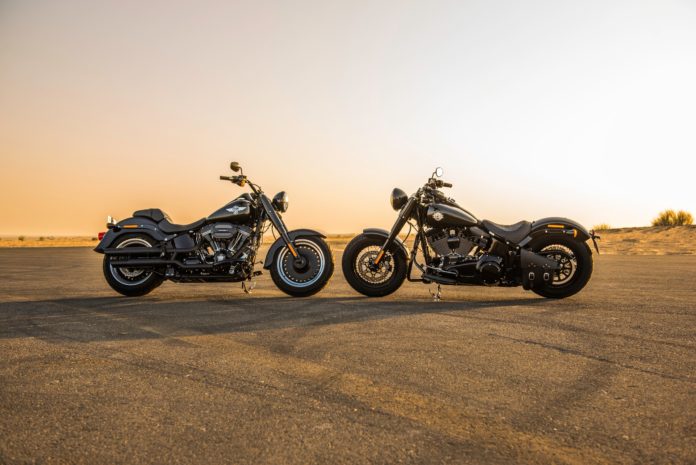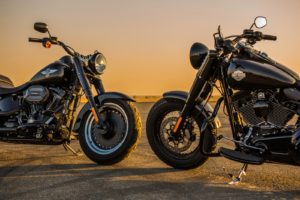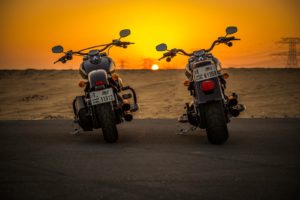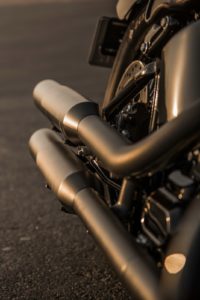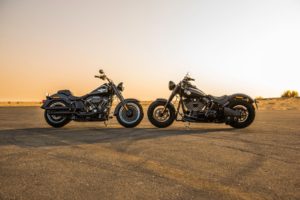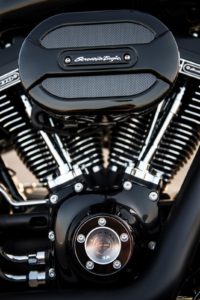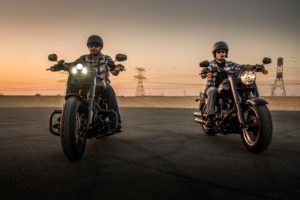When it comes to Harley-Davidson, a lot of things never change. Maybe that’s a good thing, right? As a brand, Harley-Davidson represents a long-standing tradition and sells motorcycling nostalgia. The challenge it faces and one that it tackles beautifully well is that it balances those qualities with advancement and innovation. The Softail family of motorcycles is a result of such innovation. These motorcycles featured here are shining examples of how Harley-Davidson has combined the comfort and performance of modern suspension with the profile of old-fashioned simplicity.
There are no less than seven Harley-Davidson Softail models in H-D’s 2017 model line-up, and at the heart of every Softail series motorcycle is Harley-Davidson’s Air Cooled High Output Twin Cam 110B engine, that delivers an upwards of 135Nm of torque to the road when you hit the throttle.
But there in lies the problem. If you want to buy one machine from the Softail family, which one would you get? There are some of us who just walk into the showroom and wait till one of the motorcycles talks to us. There it is, the bond is made. However, what if “the one” doesn’t talk to you, what if it’s shy and waiting for you to initiate the bond?
We’ve picked two of the best selling Softail family members here and placed them side by side to highlight the differences and similarities that make them such iconic motorcycles.
Lets start with the names; as they say a lot about the differences. The Fat Boy S is well; fat. It looks fat, it feels fat and quite simply put; it is fat. Even though you might assume that it is heavier than the Softail Slim S, it isn’t. There’s literally no weight difference between the two. It’s just a matter of perception. When you see the big chunky wheels on the Fat Boy S, you automatically perceive it to be big and heavy. The Fat Boy S weighs 335 kg and the Softail Slim weighs 322kgs. The difference in weight, according to Harley-Davidson is because of the wheels. The cast wheels on the Fat Boy S versus the spoke wheels on the Softail Slim S are where the weight differences lies.
Having ridden the Fat Boy S extensively when compared to the Softail Slim S, I was surprised how easy it is to ride the Slim into corners when compared to the Fat Boy. Knowing that it’s not the mass of the bike that makes the difference but the tyre profile. The Fat Boy S is shod with a 140-section front tyre and a 200-section tyre on the rear. The Slim wears mere 130 front and 140 section rear tyre.
Handling the Softail Slim S was a joy compared to the Fat Boy S; which you have to get used to before you can confidently plant it in corners at speed. Even the riding position is slightly different on the Softail Slim S, you are in a bit more relaxed and laidback position compared to the slightly straight and upright position on the Fat Boy S. Additional contributing factors make a difference too. The Slim’s seat height is 20mm lower than the Fat Boy S and so is its ground clearance which is 115mm instead of the Fat Boy’s 125mm. The lean angles are different too as it leans only 24 degrees to the right and 24.9 degrees to the left, while the Fat Boy goes 25.2 degrees to the left and 25.6 degrees to the right before its exhaust scrapes the road.
Visually, both of them look the part. It’s just a question of which one appeals to you more. Harley-Davidson have done a fantastic job in preserving the looks while adding modern tech. Both versions have a modern, well built air-cooled push rod engines, but the ride and feel resembles that of a classic Harley thanks to the vibrations sent across the frame from its direct mounted engine. Yes, that’s right, no rubber bushings on either of these bikes to minimize vibrations. The engines are counterbalanced however, or so it is claimed. Once you get used to the characteristic rocking while at idle, you’ll learn to love it and ignore it.
Another eye-catching feature is the seat on the Softail Slim S that looks so cool but in terms of comfort, the Fat Boy S offers more with its plush and well-cushioned saddle. This also makes you sit slightly higher on the Fat Boy S than the Softail Slim S. Apart from the tyres and the seats, the front and rear fenders are also different. The Fat Boy S gets a more traditional look while the Softail Slim S talks to you more like a bobber with its chopped off fenders. The petrol tanks are identical, but the Slim has a large gap between the seat and tank.
What about the engine then? Both these models are powered by a Screamin’ Eagle Air-cooled, Twin Cam 110B engine. And it turns out that that not all 110B engines are created equal. Official numbers on Harley-Davidson’s website shows that the Slim has a slightly higher torque figure of 148 Nm at at slightly lower 3500 rpm. The Fat Boy S puts out 146Nm at a slightly higher 4000 rpm. The gear ratios remain the same however.
The Slim S and Fat Boy S are both very impressive machines, mechanically as well as visually. They both have cruise control as a standard along with ABS brakes and Harley-Davidsons annoyingly loud but immensely useful anti-theft system which goes off when someone fiddles with your motorcycle even so slightly.
Photography: Laura Huntley


